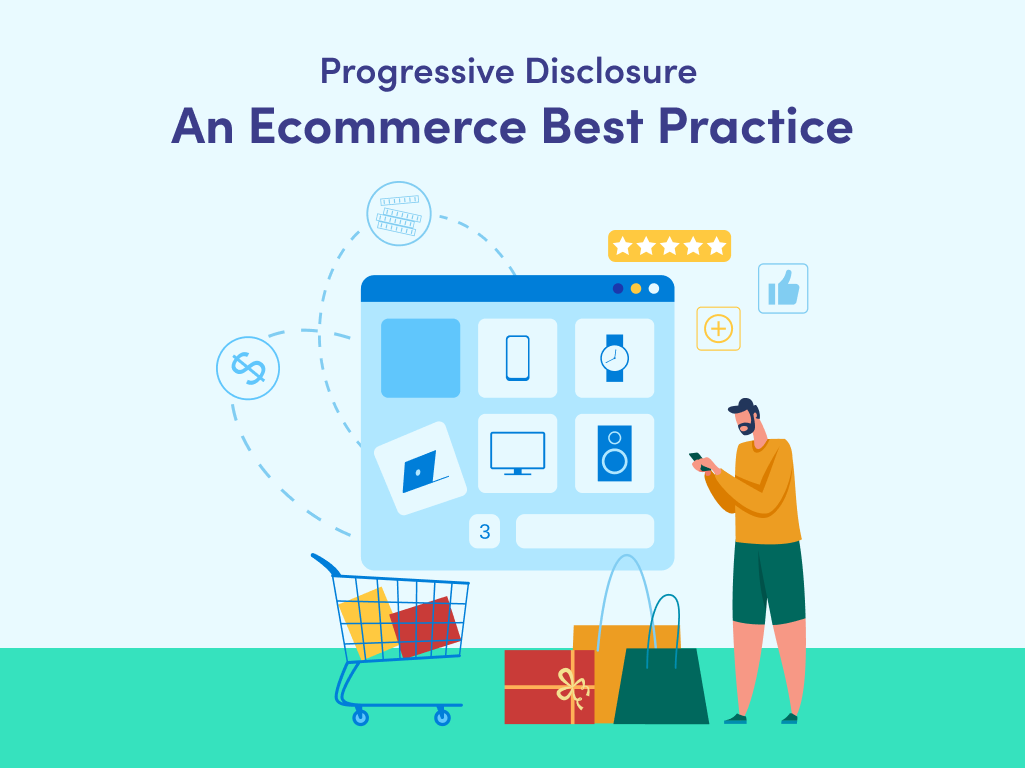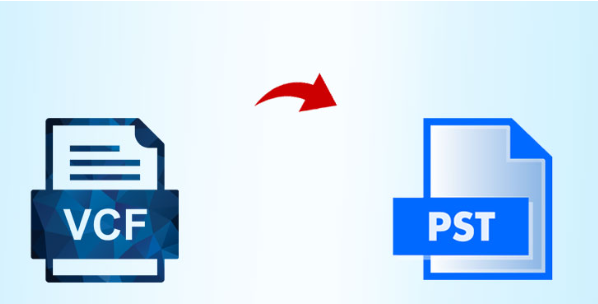Progressive Disclosure in E-commerce Forms is one of the critical web development best practices. Understanding and applying progressive disclosure is a game-changer that helps elevate ecommerce web design solutions.
So, what is progressive disclosure? Simply speaking, it is a design strategy. You can leverage it to understand what you need to prioritize at the moment and reveal additional information as required. What is its relevance to e-commerce forms? They are critical touchpoints where your customers interact with your site. Whether signing up for the website, checking it out, or customizing a product, ecommerce forms can make magic happen. They significantly impact whether a visitor becomes a buyer or leaves your site. Such is its importance and relevance in ecommerce web development.
Progressive disclosure in ecommerce forms does more than hide and show fields. It crafts intuitive and engaging experiences and effectively guides users to complete tasks without frustration. In this blog, we will walk you through why progressive disclosure matters in e-commerce. We will also see how it benefits your users and their conversion rates. However, we will prioritize the best practices for progressive disclosure implementation in forms. We will use these actionable insights to make your ecommerce forms more user-friendly and seamless. Ready to dive in?
Progressive Disclosure: One Of The Key Web Development Best Practices
Progressive disclosure is a fundamental user interface design principle, particularly in e-commerce. As one of the top ecommerce website developers, you can use this methodology to unveil information and options to the user strategically. Thus, this methodology uses minimalism to enhance user engagement and improve decision-making processes. The rationale is to mitigate cognitive overload, streamlining user interactions with complex forms and interfaces.
In e-commerce, the efficiency of form completion directly impacts conversion rates. Hence, the application of progressive disclosure is mandatory. While it acts as a tool for aesthetic simplification, you can also apply it as a mechanism to optimize the user journey by:
- Simplifying data input fields
- Applying extensive customization options
- Guiding users towards the completion of a transaction
Let us look at the critical objectives of Progressive Disclosure and how it enhances the utility of e-commerce forms.
Reduction in Cognitive Load
Here, we present information sequentially. This confines the user’s focus to immediately relevant data, thus preventing excess data cluttering. This is a prevalent drawback of densely populated interfaces.
Enhanced Completion Rates
We can increase form completion rates by simplifying forms in ecommerce web design solutions. Users are more inclined to continue an action that appears less daunting since it requires minimal effort.
User Satisfaction
When you simplify the user journey, it does not only merely expedite the transaction process. It also significantly enhances the user’s perception of the brand and platform, fostering loyalty and encouraging repeat interactions.
Why Progressive Disclosure Is One Of The Key Ecommerce Web Development Best Practices
Ecommerce websites particularly benefit from the strategic implementation of progressive disclosure as a design practice. Here, we must navigate complex checkout processes, registration interfaces, and product customization options. This further enhances the necessity for an optimized user experience. Thus, mastering progressive disclosure is mandatory for ecommerce web development. We will look into three critical aspects that further justify this point.
Navigating the ECommerce form complexity
E-commerce forms are the conduits that allow the seamless flow of user interaction. Forms encapsulate everything from initial registration to the final act of purchase. However, each form, whether for checkout, registration, or product customization, presents a unique set of challenges and opportunities for ecommerce development in USA. The complexity stems more from the need to balance comprehensive information gathering with a frictionless user experience. Progressive disclosure facilitates this balancing act by allowing developers to reveal information judiciously. Thus, it helps maintain user engagement through tailored interactions, making this technique one of the more popular web e-commerce web development best practices.
Elevating Conversion Rates Through Strategic Design
There lies an undeniable correlation between form design and conversion rates. Ideally, a good form is one that:
- Intuitively guides the user
- Reveals information and options as needed
- Significantly reduces friction
- Mitigates cart abandonment factors
Employing progressive disclosure helps ensure that users are not overwhelmed by the amount of information or decisions requested. Further, the strategic unveiling of content keeps the user’s journey focused and manageable. Consequently, the likelihood of form completion increases, leading to conversion success.
For example, consider the checkout process. Often, it consists of multiple steps and information fields. By judiciously applying progressive disclosure here, we can segment this process into small relevant segments and reveal each at the optimal moment. This will streamline the experience and empower users with a sense of achievement as they progress.
Using Thoughtful Interactions to Foster Customer Loyalty
The nuanced application of progressive disclosure significantly impacts customer loyalty. A user’s ecommerce journey is based on trust and engagement. Designing forms that respect the user’s cognitive load and adapt to their pace helps build trust. This trust translates into user satisfaction, making progressive disclosure one of the critical web development best practices we can implement in ecommerce
A platform that demonstrates an understanding of user needs through thoughtful form design and progressive disclosure communicates a commitment to user satisfaction. This commitment cultivates a loyal user base. Loyal customers are not just repeat buyers but advocates for your platform. Hence, they directly contribute to its success through both direct engagement and the powerful word-of-mouth effect.
Web Development Best Practices For Implementing Progressive Disclosure In E-Commerce Forms
Finally, we will look at appropriate web development best practices you can integrate into your ecommerce web development. These best practices will further elevate the quality and effectiveness of your ecommerce web design solutions
Understanding Your Audience
Gain a deep understanding of your audience. Recognize their diverse expertise levels and purchasing histories to adopt a tailored approach to form complexity.
Tailoring Form Complexity
Adjust the complexity of your forms based on the user’s familiarity with your products. Leverage their previous interactions to gain valuable insights. For instance, spare repeat customers from repetitive data entry through the dynamic personalization of form fields. Gain insights from their previous interactions and purchase history for the same.
Segmenting Users
Dynamically segment users and personalize form fields according to their behavior and profile data. This will ensure a more relevant and engaging experience. Further, you will streamline the form-filling process and enhance your user journey by taking a personalized approach.
Organize your content strategically
Effective content organization within your forms is crucial for maintaining user engagement and facilitating a seamless experience.
Immediate vs. Progressive Disclosure
Deliberate diligently to understand which information to display up front and which to reveal progressively. Begin with essential information to engage the user. Then, gradually disclose more detailed fields to prevent early drop-offs.
Grouping Related Information
The logical grouping of related information helps create a coherent flow that users can easily follow. Further, this technique can reduce cognitive load, making the process more intuitive.
Design Considerations
The visual design and layout play a significant role in implementing progressive disclosure. Hence, it is one of the best custom ecommerce website development practices.
Visual Cues
Employ visual cues like arrows, “+” signs, and accordions to indicate hidden or additional information. Use these cues liberally to guide users through the form. These help signal the presence of more content without overwhelming users with information.
Responsiveness and Accessibility
Design forms that adapt to various devices and screen sizes and comply with accessibility standards cater to users of different niches.
Technical Implementation of Progressive Disclosure
The backbone of progressive disclosure is its technical implementation, which relies on the right technologies and coding practices. Let us explore the useful ones.
Technologies and Frameworks
Leverage technologies like JavaScript and AJAX and frameworks such as React to facilitate the dynamic aspects of progressive disclosure. Using them, you can allow for the asynchronous loading of content. This will further make the user experience smoother and more interactive.
Implementation Strategies
Some examples of practical implementation strategies include incorporating code snippets and pseudo-codes. As an ecommerce web developer, you know that you can use AJAX to load form sections dynamically based on user input without refreshing the page. As a result, you facilitate seamless interactions and enhance user experience.
User Feedback and Interaction
Integrating mechanisms to gather and incorporate user feedback is essential for refining the progressive disclosure approach. Implement feedback loops to allow users to provide input on their experience. Use this feedback to add enhancements to further personalize the disclosure process.
Error Handling
Within a progressively disclosed form, you must manage errors efficiently. Write clear and helpful error messages to guide the user towards its successful resolution.
Performance Optimization
When you deal with dynamically loaded content, you must optimize its performance. This will impact the success of using progressive disclosure in ecommerce forms. Employ loading strategies such as lazy loading and pre-fetching. This will ensure a fluid user experience. Further, optimize how and when content loads to impact the perceived responsiveness of the form significantly.
Additionally, balance the interactive elements of progressive disclosure with overall performance. Ensure that the dynamic loading of content does not hinder the site’s speed since it can hamper user engagement.
We have provided a comprehensive guide to web development best practices that explore the strategic, design, and technical aspects of implementing progressive disclosure in e-commerce forms. Further, we emphasize the importance of user-centered design and performance optimization. This approach will definitely enhance the e-commerce user experience.
Conclusion
From the above content, it is clear that progressive disclosure in e-commerce forms is one of the best web development best practices. This approach is not just beneficial; it is essential. By intelligently managing how and when information is presented to users, we significantly enhance online shopping experience. This makes ecommerce websites more intuitive and less overwhelming. Further integrating this technique in ecommerce web design solutions will directly contribute to higher form completion rates and, consequently, improved conversion rates.



